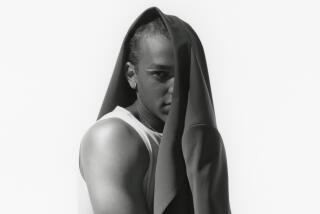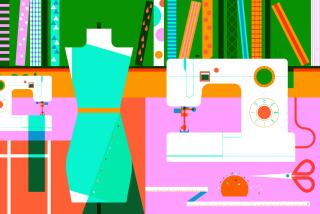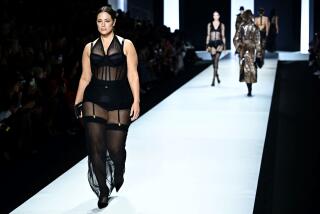Engineer-Tailor Programming Computer to Figure Finer Fits for Female Figures
- Share via
DAYTON, Ohio — When he was tailoring shirts to help put himself through engineering school, Dana B. Rogers never thought that someday he would combine the two disciplines.
But with the help of a new generation of computer programs, Rogers is combining them in hope of designing tailor-made fashions at off-the-rack prices.
“To me, it’s a natural extension of what an engineer does for a living,” said Rogers, 52, an associate professor of engineering at the University of Dayton.
His daughter, Beth, 23, who has always had the dream of owning her own B. Marie dress shop, sees it as a way to let women enjoy the same benefits men have of getting clothes altered at reasonable prices.
‘Personal Aspect’
“They don’t do it for women. That’s the problem. I go to 10 different stores before I find a dress that I like and will fit me,” she said. “This gives a personal aspect to it.”
When he is not making measurements on the dressmaker’s dummy, complete with false nose and mustache, that stands in his office, Rogers designs ways to make computers more efficient.
Fashion designing came by accident about 1 1/2 years ago while the family was eating at a hamburger restaurant.
“I don’t remember who said it, but someone said, ‘Let’s make a fast boutique like we have fast food.’ A couple of french fries later, someone said: ‘Can we do that?’ ” Rogers recalled.
Armed with his personal computer and a computer-aided design program, the same type used to design cars and airplanes, Rogers set to work finding ways to translate measurements from the dressmaker’s dummy to the computer.
“There’s no reason you can’t have the machine get into the tailor’s head and operate how he does when he fits clothes,” Rogers said.
Computer Formulas
Working part time, mostly at home on his personal computer, Rogers developed formulas relating to the body’s curves and measurements and fit them into the computer program. It was critical to find reference points that anyone could use to begin measurements.
“It’s not an easy problem, but not impossible. Cloth is very forgiving. It’s not necessary to be perfect,” he said.
Rogers settled for points on the upper and lower back and a point under the arm. From there his measurement grids crisscross the dummy.
So far he has made simple “slopers,” the loose-fitting patterns that people who sew at home use to better fit the final pattern.
Rogers next will take some simple fashions, figure out how to turn their curves into formulas, and then how to have the formulas from his body measurements work on the fashion formulas to produce a tailor-fit garment.
Library of Designs
He dreams of a customer who goes into a store, gets measured, then selects clothing from a computer library of designs. The computer combines the two, “stretches” the fashion pattern to the body’s measurements, and tells a machine how to cut the cloth. A seamstress or tailor then sews it and within a day the perfect-fit clothing is ready.
“I see the creation of jobs,” he said. “The point of sale is the point of manufacture. With ready-to-wear, the point of manufacture is offshore.”
Rogers thinks such a B. Marie store could be profitable because what is spent on the computer can be made up by reducing a large inventory of clothes to a much smaller inventory of raw fabric.
“Just dreaming, if you had a new fashion and put it together on a computer, 30 seconds later everyone could have it by telephone,” Rogers said.






